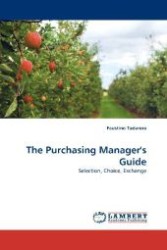- ホーム
- > 洋書
- > 英文書
- > Nature / Ecology
基本説明
Includes a variety of case studies in which landscape connections and corridors were explicitly considered as management options.
Full Description
One of the biggest threats to the survival of many plant and animal species is the destruction or fragmentation of their natural habitats. The conservation of landscape connections, where animals, plants, and ecological processes can move freely from one habitat to another, is therefore an essential part of any new conservation or environmental protection plan. In practice, however, maintaining, creating, and protecting connectivity in our increasingly dissected world is a daunting challenge. This fascinating volume provides a synthesis on the current status and literature of connectivity conservation research and implementation. It shows the challenges involved in applying existing knowledge to real-world examples and highlights areas in need of further study. Containing contributions from leading scientists and practitioners, this topical and thought-provoking volume will be essential reading for graduate students, researchers, and practitioners working in conservation biology and natural resource management.
Contents
1. Connectivity conservation: maintaining connections for nature Kevin R. Crooks and M. A. Sanjayan; Part I. Approaches to Connectivity Research: Introduction: connectivity - what are the issues John A. Wiens; 2. Landscape connectivity: a return to the basics Philip Taylor, Lenore Fahrig and Kimberly With; 3. Connectivity and metapopulation dynamics in highly fragmented landscapes Atte Moilanen and Ilkka Hanski; 4. Genetics and landscape connectivity Richard Frankham; 5. Connectivity at the land-water interface Drew Talley, Gary Huxel and Marcel Holyoak; 6. Influence of natural landscape fragmentation and resource availability on distribution and connectivity of gray wolves (Canis lupus) in the archipelago of coastal British Columbia, Canada Paul C. Paquet, Shelley M. Alexander, Patricia L. Swan and Chris T. Darimont; 7. Migratory connectivity Peter P. Marra, D. Ryan Norris, Susan M. Haig, Mike Webster and Andy Royle; 8. Connectivity in marine ecosystems: the importance of larval and spore dispersal Claudio Dibacco, Lisa A. Levin and Enric Sala; 9. Connectivity and wide-ranging species in the ocean Autumn-Lynn Harrison and Karen A. Bjorndal; 10. Hydrologic connectivity: a neglected dimension of conservation biology Catherine Pringle; 11. Connectivity and ecosystem services: crop pollination in agricultural landscapes Taylor H. Ricketts, Neal M. Williams and Margaret M. Mayfield; Part II. Assessing Connectivity: Introduction: evaluating and quantifying the conservation dividends of connectivity Peter Kareiva; 12. Quantifying connectivity: balancing metric performance with data requirements William F. Fagan and Justin M. Calabrese; 13. Assessing connectivity in salmonid fishes with DNA microsatellite markers Helen Neville, Jason Dunham and Mary Peacock; 14. Individual-based modeling as a tool for conserving connectivity Jeff A. Tracey; 15. Linking connectivity to viability: insights from spatially-explicit population models of large carnivores Carlos Carroll; 16. Impacts of corridors on populations and communities Nick M. Haddad and Josh J. Tewksbury; 17. Exploring the functional connectivity of landscapes using landscape networks David M. Theobald; Part III. Challenges and Implementation of Connectivity Conservation: Introduction: don't fence me in Thomas Lovejoy; 18. Hyperconnectivity, invasive species, and the breakdown of barriers to dispersal Jeffrey A. Crooks and Andrew V. Suarez; 19. Disease and connectivity Hamish McCallum and Andy Dobson; 20. Maintaining and restoring connectivity in landscapes fragmented by roads Anthony P. Clevenger and Jack Wierzchowski; 21. Where to draw the line: integrating feasibility into connectivity planning Scott A. Morrison and Mark D. Reynolds; 22. South coast missing linkages: restoring connectivity to wildlands in the largest metropolitan area in the United States Paul Beier, Kristeen L. Penrod, Claudia Luke, Wayne D. Spencer and Clint Cabanero; 23. Incorporating connectivity into broad-scale conservation planning Reed F. Noss and Kathleen M. Daly; 24. Escaping the minimalist trap: Design and implementation of large-scale biodiversity corridors James Sanderson, Gustavo A. B. Da Fonseca, Carlos Galindo-Leal, Keith Alger, Victor Hugo Inchausty, Karl Morrison and Anthony Rylands; 25. The role of connectivity in Australian conservation Michael E. Soule, Brendan G. Mackey, Harry F. Recher, Jann E. Williams, John C. Z. Woinarski, Don Driscoll, William C. Dennison and Menna E. Jones; 26. The future of connectivity conservation Andrew F. Bennett, Kevin R. Crooks and M. A. Sanjayan.








